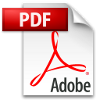General Info
| Host: | Rabbit |
| Applications: | WB |
| Reactivity: | Human |
| Note: | STRICTLY FOR FURTHER SCIENTIFIC RESEARCH USE ONLY (RUO). MUST NOT TO BE USED IN DIAGNOSTIC OR THERAPEUTIC APPLICATIONS. |
| Short Description: | Rabbit polyclonal antibody anti-IL17A (24-155) is suitable for use in Western Blot research applications. |
| Clonality: | Polyclonal |
| Conjugation: | Unconjugated |
| Isotype: | IgG |
| Formulation: | PBS with 0.05% Proclin300, 50% Glycerol, pH7.3. |
| Purification: | Affinity purification |
| Dilution Range: | WB 1:100-1:500IF 1:50-1:200 |
| Storage Instruction: | Store at-20°C for up to 1 year from the date of receipt, and avoid repeat freeze-thaw cycles. |
Information
| Gene Symbol: | IL17A |
| Gene ID: | 3605 |
| Uniprot ID: | IL17_HUMAN |
| Immunogen Region: | 24-155 |
| Immunogen: | Recombinant fusion protein containing a sequence corresponding to amino acids 24-155 of human IL17A (NP_002181.1). |
| Immunogen Sequence: | GITIPRNPGCPNSEDKNFPR TVMVNLNIHNRNTNTNPKRS SDYYNRSTSPWNLHRNEDPE RYPSVIWEAKCRHLGCINAD GNVDYHMNSVPIQQEILVLR REPPHCPNSFRLEKILVSVG CTCVTPIVHHVA |
Description
| Tissue Specificity | Expressed in memory Th17 cells (at protein level). |
| Post Translational Modifications | N-glycosylated. Found both in glycosylated and nonglycosylated forms. |
| Function | Effector cytokine of innate and adaptive immune system involved in antimicrobial host defense and maintenance of tissue integrity. Signals via IL17RA-IL17RC heterodimeric receptor complex, triggering homotypic interaction of IL17RA and IL17RC chains with TRAF3IP2 adapter. This leads to downstream TRAF6-mediated activation of NF-kappa-B and MAPkinase pathways ultimately resulting in transcriptional activation of cytokines, chemokines, antimicrobial peptides and matrix metalloproteinases, with potential strong immune inflammation. Plays an important role in connecting T cell-mediated adaptive immunity and acute inflammatory response to destroy extracellular bacteria and fungi. As a signature effector cytokine of T-helper 17 cells (Th17), primarily induces neutrophil activation and recruitment at infection and inflammatory sites. In airway epithelium, mediates neutrophil chemotaxis via induction of CXCL1 and CXCL5 chemokines. In secondary lymphoid organs, contributes to germinal center formation by regulating the chemotactic response of B cells to CXCL12 and CXCL13, enhancing retention of B cells within the germinal centers, B cell somatic hypermutation rate and selection toward plasma cells. Effector cytokine of a subset of gamma-delta T cells that functions as part of an inflammatory circuit downstream IL1B, TLR2 and IL23A-IL12B to promote neutrophil recruitment for efficient bacterial clearance. Effector cytokine of innate immune cells including invariant natural killer cell (iNKT) and group 3 innate lymphoid cells that mediate initial neutrophilic inflammation. Involved in the maintenance of the integrity of epithelial barriers during homeostasis and pathogen infection. Upon acute injury, has a direct role in epithelial barrier formation by regulating OCLN localization and tight junction biogenesis. As part of the mucosal immune response induced by commensal bacteria, enhances host's ability to resist pathogenic bacterial and fungal infections by promoting neutrophil recruitment and antimicrobial peptides release. In synergy with IL17F, mediates the production of antimicrobial beta-defensins DEFB1, DEFB103A, and DEFB104A by mucosal epithelial cells, limiting the entry of microbes through the epithelial barriers. Involved in antiviral host defense through various mechanisms. Enhances immunity against West Nile virus by promoting T cell cytotoxicity. May play a beneficial role in influenza A virus (H5N1) infection by enhancing B cell recruitment and immune response in the lung. Contributes to influenza A virus (H1N1) clearance by driving the differentiation of B-1a B cells, providing for production of virus-specific IgM antibodies at first line of host defense. |
| Protein Name | Interleukin-17aIl-17Il-17aCytotoxic T-Lymphocyte-Associated Antigen 8Ctla-8 |
| Database Links | Reactome: R-HSA-448424Reactome: R-HSA-6785807Reactome: R-HSA-9705671 |
| Cellular Localisation | Secreted |
| Alternative Antibody Names | Anti-Interleukin-17a antibodyAnti-Il-17 antibodyAnti-Il-17a antibodyAnti-Cytotoxic T-Lymphocyte-Associated Antigen 8 antibodyAnti-Ctla-8 antibodyAnti-IL17A antibodyAnti-CTLA8 antibodyAnti-IL17 antibody |
Information sourced from Uniprot.org
12 months for antibodies. 6 months for ELISA Kits. Please see website T&Cs for further guidance





